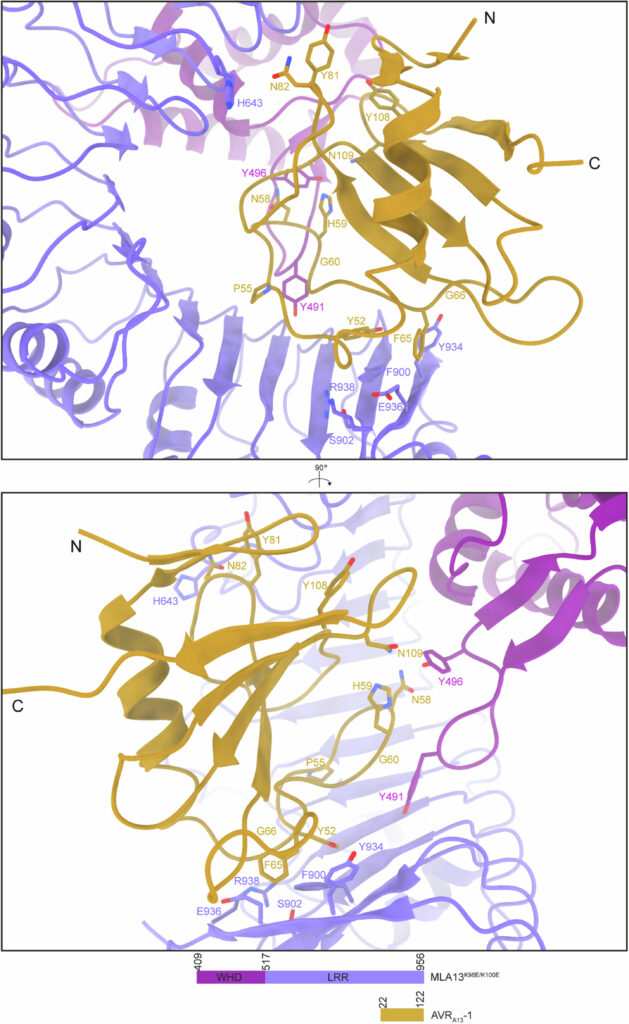Understanding How to Make Barley Resistant to Fungal Diseases
Introduction
Barley is a vital crop worldwide, vital for food and animal feed. However, it faces a severe threat from a fungal disease called powdery mildew, which can lead to significant crop losses—up to 40% in some cases. Understanding how barley plants defend themselves against such diseases could help scientists improve their resistance, ensuring better yields and enhanced food security.
The Role of Immune Receptors in Barley
To combat fungal diseases, barley plants have developed various immune receptors. These receptors are proteins in the plant that can recognize specific proteins produced by the fungus, known as effectors. When a receptor identifies a matching effector, it triggers the plant’s defense mechanisms, effectively providing resistance to the disease.
Researchers are keen to learn more about these interactions between the plant’s receptors and the fungal effectors. This knowledge can inform efforts to breed barley and related crops like wheat to resist these harmful pathogens.
Recent Advances in Research
A recent study by scientists at the Max Planck Institute for Plant Breeding Research in Germany has provided notable insights into how barley’s immune receptors work. Using a technique called cryogenic electron microscopy (cryo-EM), they were able to examine the structure of an immune receptor known as MLA13 when it binds with its specific fungal effector, AVRA13-1.
What is Cryogenic Electron Microscopy?
Cryo-EM is a cutting-edge imaging technique. In this method, biological samples are frozen to extremely low temperatures and embedded in a type of glass-like ice. This process preserves the natural structure of proteins and allows researchers to view them at a very detailed, atomic level.
This recent study revealed the exact way the MLA13 receptor interacts with the AVRA13-1 effector and how the effector itself is structured. This foundational knowledge is critical for advancing agricultural biotechnology.
Engineering New Immune Receptors
Based on their findings, the researchers sought to explore the potential of engineering a different immune receptor, called MLA7, to recognize the AVRA13-1 effector as well. The team discovered that the genetic sequences of MLA receptors are very similar, including MLA7 and MLA13.
By making a single change—a switch in one amino acid within MLA7—the researchers successfully modified it so that it could recognize AVRA13-1 in addition to its original target, AVR7. This showcases a promising technique that could significantly enhance plants’ defense mechanisms.
Limitations of Traditional Plant Breeding
Traditionally, plant breeding involves cross-breeding plants over many generations to develop desired traits, such as resistance to diseases. However, this method can be slow and may not keep up with the fast-changing nature of fungi like those causing powdery mildew, which can quickly evolve new strains capable of bypassing existing defenses.
The ability to engineer plant immune receptors more precisely offers a faster alternative. It allows scientists to adapt these receptors to recognize new threats without lengthy breeding cycles, making it a powerful tool in agricultural science.
Broadening the Scope for Cereal Crops
The genes responsible for MLA immune receptors were inherited from a common ancestor among cereal crops like barley, wheat, oats, and rye. The findings from this study could be crucial not only for barley but also for other staple grains facing different plant diseases, such as rust fungi and the rice blast fungus.
By using gene editing techniques, researchers can create resistant varieties of these crops, potentially enhancing food security on a global scale.
Conclusion
The ongoing research into barley’s immune responses showcases how science can innovate solutions to agricultural challenges. By understanding the interactions between barley’s immune receptors and fungal effectors, scientists are paving the way for more effective and efficient breeding methods. This approach could ensure that crops remain resilient against diseases, securing food sources for future generations.
Future Prospects
As researchers continue to explore plant immune systems, we can expect even more advancements in biotechnology aimed at crop protection. These developments offer hope for farming that can adapt to new challenges in pest and disease management, ultimately leading to sustainable agricultural practices worldwide.
